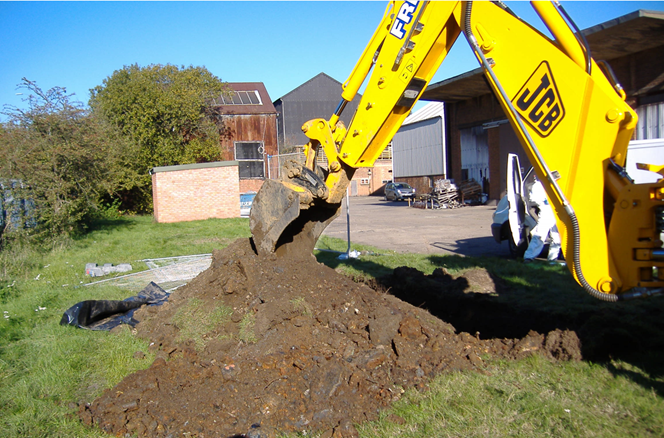
The appended table provides an extract from the analytical results of a Waste Acceptance Criteria test (WAC) from an anonymised site. Such testing can be expensive and yet the need for such testing continues to remain, at times, misunderstood by both clients and consultants. Indeed, there remains a fundamental degree of confusion as to the purpose of WAC testing, even 15 years after they were first introduced under the UK implementation of the Waste Framework Directive. WAC testing is only used to determine how a waste will behave once it’s buried in a landfill. This is carried out primarily through analysis of leachate derived from that waste during laboratory analysis. It cannot be used to determine whether a waste is hazardous or not. Whether a waste is hazardous is dependent upon the Hazardous Waste Regulations and is established by reference to the Hazardous Waste List of the European Waste Catalogue (EWC) on the basis of the absolute amounts present in a substance.
To reiterate, WAC testing is inadequate on its own for allowing the disposal of soils. The same material must also be tested for total concentrations which should be used first to define its hazardous characteristics or classification. Logically, WAC testing should only be considered if the soil is known or very likely destined for disposal of to a Licensed Landfill. Consequently, in the interests of sustainability, reducing costs, reducing sample jars, laboratory time and equipment, we should not by default schedule WAC testing during a typical site investigation. Submission of waste soils to a landfill accompanied only with WAC results could also result in refusal to accept. Refusal cannot only offend but can also be very costly and embarrassing.
To restate the point, WAC tests are a secondary layer of classification emplaced to ensure that as a waste material they are suitable for placement and compliance within the target landfill without generating a future leachate problem at the same receiving landfill. The test is required only after waste classification has defined its hazardous properties and only determines whether the waste is suitable for deposition at an Inert, Stable Non-Reactive or Hazardous Waste landfill. There is nothing much else you can do with WAC test results.
As already noted, the primary classification of waste soil as Hazardous or Non-Hazardous is made using the results of analysis of total concentrations of the hazardous substances that could be in it, not the amount that potentially comes out after WAC leachate testing. This requirement for solid analysis derives from the Waste Framework Directive (enshrined in UK law) and is the process used to define the absolute hazardous properties that a material might have. These properties determine at a very fundamental level as to how you must treat it as a material for disposal, handling and storage purposes including the application of the Carriage of Dangerous Goods and Use of Transportable Pressure Equipment Regulations to even get it off-site.
The list of potentially hazardous substances for which you should be analysing should be based on the desk study and the ground investigation findings. Indeed, most of the data required for primary classification is often already available from the initial ground investigation without further need nor cost, so you can get twice the value for your analytical sample costs. The data you need to characterise a waste may already be in your reports, hopefully stored in an AGS4 or similar format so you can forward it directly to your waste contractor for characterisation. If in doubt during the investigation phase as to what you might actually need to categorise, think ahead so as to ensure that you have enough primary data for a waste contractor to classify the soil at a later point. There is no need to schedule expensive WAC tests when often they are not needed nor assume on the occasion of landfill disposal that they alone will satisfy the expectation of the receiving landfill. If in doubt, ask an expert and think the process through.
If this monologue still leaves you wondering, there is a great video about tea bags here https://www.linkedin.com/feed/update/urn:li:activity:6686937368596885504/
The AGS published excellent practical guidance in 2019 “Waste Classification for Soils – A Practitioners Guide” https://www.ags.org.uk/item/ags-guidance-on-waste-classification-for-soils-a-practitioners-guide/
Article provided by Marian Markham (Land Quality Associate Director at Jacobs) and Chris Swainston (Principal Environmental Engineer at Soils Limited)
